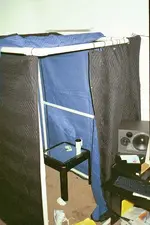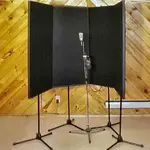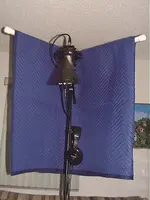A
aznwonderboy
New member
For the purpose of vocal recording, which technique will deaden / absorb reflections better?
1.) a tent or fort made from moving blankets and PVC pipes (pic "1": from Hi_D_Ho_Man)
2.) a semi-circle behind the mic made from 3 OC 703 panels (pic "2": from RealTraps.com)
3.) a free-standing corner made from a blanket and PVC (pic "3": from KidVybes)
I heard that blankets on the wall only absorb mid and high frequencies; lows are still reflected. Is it true that as long as the blankets are placed far from the wall, then I don't have to worry about the reflecting low frequencies?
What do you suggest to take care of the low frequencies with each method?
1.) a tent or fort made from moving blankets and PVC pipes (pic "1": from Hi_D_Ho_Man)
2.) a semi-circle behind the mic made from 3 OC 703 panels (pic "2": from RealTraps.com)
3.) a free-standing corner made from a blanket and PVC (pic "3": from KidVybes)
I heard that blankets on the wall only absorb mid and high frequencies; lows are still reflected. Is it true that as long as the blankets are placed far from the wall, then I don't have to worry about the reflecting low frequencies?
What do you suggest to take care of the low frequencies with each method?
Attachments
Last edited:




 I'm certainly no expert on this subject and those that are may find fault with my explaination. If so, please enlighten me as I am all ears.
I'm certainly no expert on this subject and those that are may find fault with my explaination. If so, please enlighten me as I am all ears. 
 ). i thought it would be more useful to keep all the information in one place*
). i thought it would be more useful to keep all the information in one place*